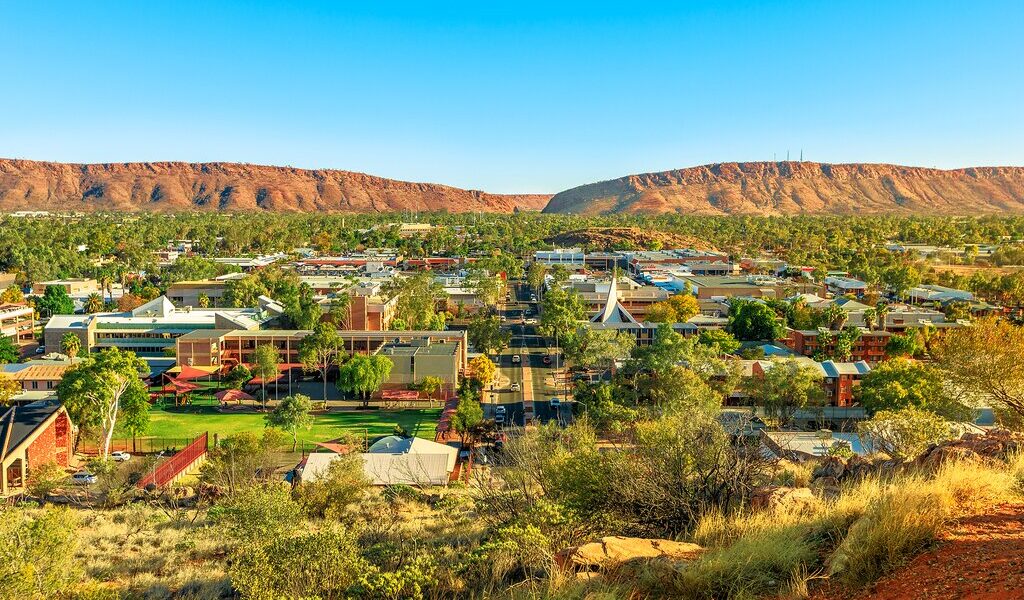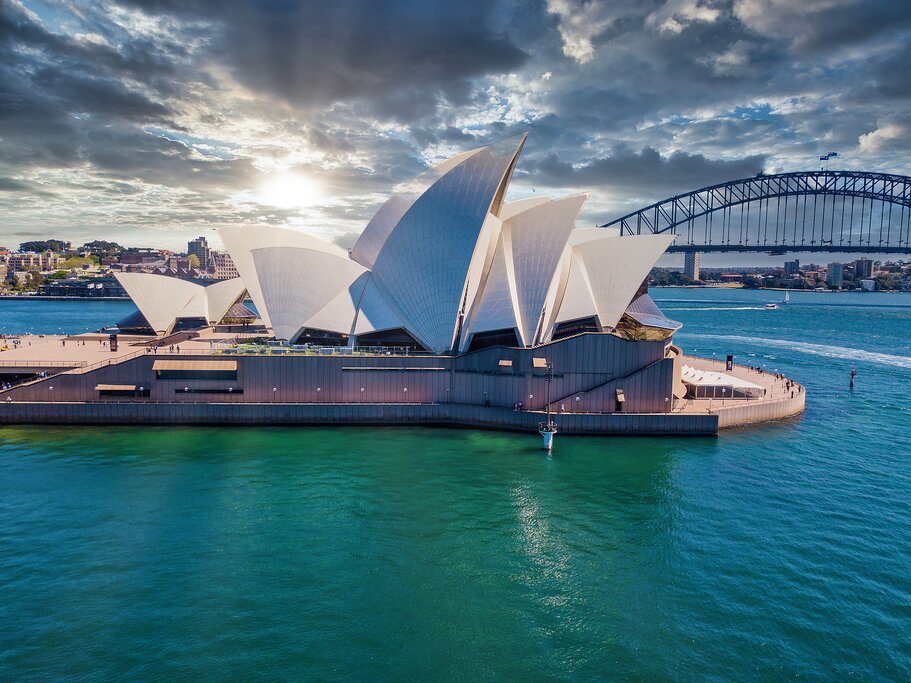
Australia is an enormous country that contains many different environments, climates, and landscapes; whichever month you go, you’re likely to find somewhere with good conditions. Generally, southern and central Australia is best visited in the Southern Hemisphere spring or fall, and northern Australia in the dry season. With warm-to-hot weather, stunning beaches, vibrant cities, vast desert landscapes, and lush tropical rainforests, there’s something for everyone to enjoy in Australia at any time of year.
“`html
Seasonal Planning: Unveiling the Best Time to Explore Australia
Australia, a land of immense scale and breathtaking diversity, is essentially a continent unto itself. This geographical grandeur means that regardless of when you choose to embark on your Australian adventure, there’s always a region experiencing its prime. The key to unlocking an unforgettable journey lies in understanding and adapting to the country’s distinct regional climates. Strategic seasonal planning is paramount. For those dreaming of a tropical escape to Northern Queensland, aligning your visit with the dry season is essential. This period, roughly coinciding with late autumn, winter, and early spring in the southern parts of the continent, promises sun-drenched days and balmy evenings. Conversely, if your heart desires city exploration in vibrant hubs like Melbourne or Sydney, the shoulder seasons of spring and fall beckon. These months offer a sweet spot of pleasant temperatures, ideal for strolling through laneways and parks, without the intense heat that can sometimes grip these urban centers.
Even during the milder seasons of spring and fall, much of Australia experiences warm weather. Summer brings scorching conditions across the continent, requiring careful consideration for travelers. While average summer highs in numerous southern coastal locales hover around a comfortable 82°F (28°C), it is not unusual for temperatures to soar, occasionally reaching a blistering 104°F (40°C). Queensland‘s coastal regions generally experience higher humidity and slightly lower temperatures compared to the inland areas. However, the desert regions transform into veritable furnaces, demanding extreme caution and meticulous planning. Furthermore, the pervasive threat of bushfires casts a shadow over much of the country during the spring, summer, and fall months. Predicting exactly when and where these fires might ignite is virtually impossible, emphasizing the importance of staying informed and vigilant throughout your travels.
Contrary to popular belief, Australia is not exclusively a land of sunshine and heat. Many first-time visitors are often surprised by the distinctly chilly conditions that can prevail in certain southern regions during the winter months. Tasmania, in particular, experiences colder temperatures compared to the mainland, and snow is a common sight in the mountainous areas, creating a picturesque winter wonderland. However, even in sea-level cities, snowfall remains a rarity. Similarly, the southern coastal cities of Adelaide, Melbourne, and Sydney can be cool during winter, with average daytime temperatures settling around 50°F (10°C). Inland Canberra, perched at an altitude of 1,900 feet (580 meters), typically experiences even cooler temperatures, averaging around 44°F (7°C). However, this colder weather translates into opportunities for winter sports enthusiasts. Nearby mountains offer commercial ski fields, beckoning skiers and snowboarders to indulge in exhilarating runs.
To effectively navigate Australia’s diverse climate, it’s useful to divide the country into three primary regions: the tropical north, the south, and the inland desert. While each region possesses its own unique characteristics, it’s important to acknowledge the variations within these broader classifications. The tropical north encompasses the coastal regions of Northern Queensland, the Northern Territory, and Western Australia, which experience a distinct two-season cycle: the wet season and the dry season. The south includes Tasmania and the mainland’s southern cities, such as Sydney, Melbourne, Adelaide, Perth, and Canberra. The term “outback” generally refers to the vast and arid inland desert, which offers a unique and challenging travel experience. Each of these regions warrants careful consideration when planning your Australian adventure.
| Seasons | Pros | Cons | Best for | Where to Visit |
| Spring (Sep-Nov) | Pleasant temperatures, blooming flora, fewer crowds than summer | Occasional rain showers, beaches may still be too cool for comfortable swimming, potential for strong winds | City sightseeing, exploring national parks, hiking in moderate climates, embarking on scenic road trips, enjoying theme parks without the summer throngs, outdoor dining | Sydney, Melbourne, Alice Springs and the surrounding outback, the diverse landscapes of Western Australia, Canberra as it awakens from winter |
| Summer (Dec-Feb; Nov-Mar in tropical north) | Hot weather perfect for beach activities, generally clear skies and sunshine in the south, ideal for water sports and outdoor adventures | Extremely hot temperatures, elevated risk of bushfires, potential for flooding in the northern tropical regions, strong UV index requiring sun protection | Relaxing on beaches, engaging in water sports, enjoying outdoor activities in southern areas, exploring air-conditioned indoor attractions | Tasmania (for cooler temperatures), the beaches of coastal Western Australia, the picturesque NSW coast, the vibrant Southern Queensland coast |
| Fall (Mar-May) | Pleasant temperatures, stunning autumn foliage in certain regions, a relaxed atmosphere compared to the peak summer season | Larger crowds at popular tourist destinations, potential for unpredictable weather patterns, some attractions may have reduced hours | City sightseeing, hiking in comfortable conditions, embarking on scenic road trips, exploring wine regions during harvest season | Sydney, Melbourne, Alice Springs and the outback, the charming towns of the Southern Queensland coast, South Australia’s wine regions |
| Winter (Jun-Aug; Apr-Oct in tropical north) | Opportunities for skiing in the mountains, generally mild temperatures in the south, ideal for exploring the tropical north during the dry season | Increased rainfall in southern areas, potential for flooding in certain regions, cooler temperatures requiring warmer clothing | Desert sightseeing, embarking on road trips through the outback, skiing in the Snowy Mountains, enjoying beaches and water sports in the tropical north, whale watching along the coast | Whitsunday Islands, Great Barrier Reef and Northern Queensland, Canberra and the nearby ski fields, Broome and the Kimberley region |
Spring in Australia (September to November): A Season of Rebirth and Exploration
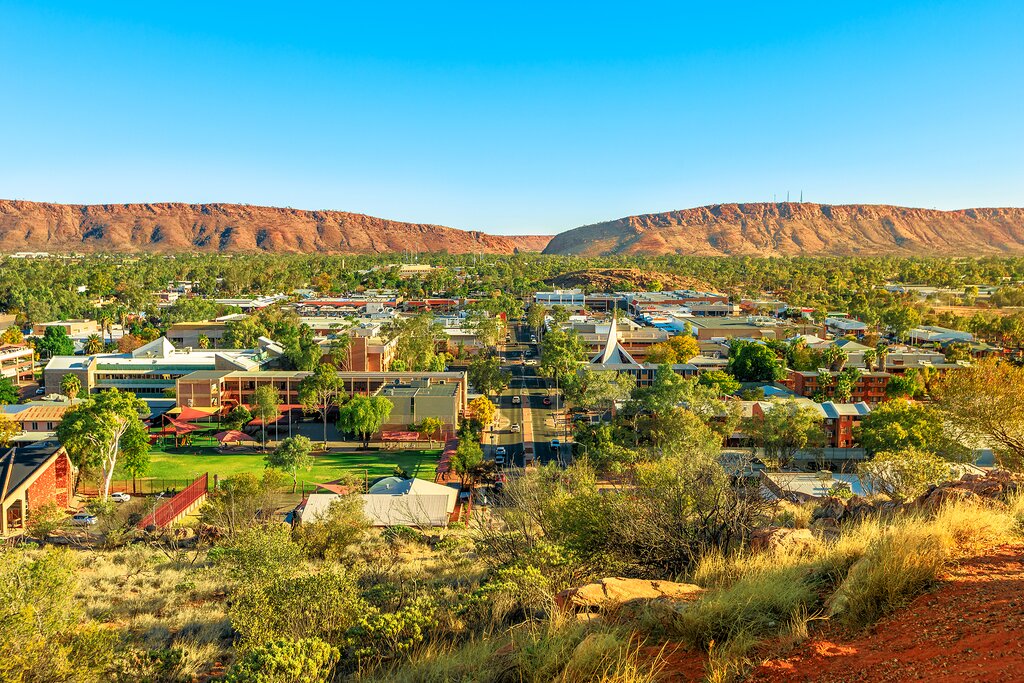
Spring stands out as a particularly inviting time to experience the wonders of Australia. The weather generally transitions from mild to warm, offering a comfortable climate for various activities, although the specific conditions will vary significantly depending on your chosen destination. If swimming in the sea or basking on a sandy beach is a priority, targeting your visit towards November may prove more rewarding than opting for September. For those seeking the best swimming conditions, consider heading to Southern Queensland, encompassing the vibrant cities of Brisbane, the dazzling Gold Coast, and the serene Sunshine Coast. Alternatively, explore Northern New South Wales (NSW), including picturesque destinations like Noosa and Byron Bay. The Perth area also boasts excellent swimming options later in the spring season, with its pristine beaches and inviting waters.
Spring is an ideal window for immersing yourself in the vibrant culture and attractions of Australia’s major cities. Destinations like Sydney, Perth, Melbourne, Canberra, and Brisbane offer a diverse range of experiences, from iconic landmarks to world-class dining. Moreover, these cities provide convenient access to stunning national parks, pristine beaches, and picturesque offshore islands (with the exception of inland Canberra!). When the weather cooperates, these natural havens provide opportunities for hiking, swimming, and simply soaking in the beauty of the Australian landscape. On cooler or rainier days, these cities also boast a wealth of indoor attractions, including art galleries, museums, shopping opportunities, and exceptional restaurants. For those seeking a taste of the outback, spring offers a unique opportunity to explore iconic destinations like Uluru, Kata Tjuta, Kings Canyon, and Alice Springs. As the low season, these areas offer a less crowded experience, allowing you to fully appreciate the rugged beauty of the Australian interior. The national parks of the Northern Territory, including Kakadu and Litchfield, also beckon with their unique flora, fauna, and Aboriginal cultural heritage.
Early spring presents an excellent opportunity for embarking on a long-distance road trip. The conditions are typically conducive to spending extended periods in the car, with temperatures that are neither too hot nor too cold. Depending on the amount of time you have available, you can choose from a variety of scenic routes. The Great Ocean Road, stretching along the Victorian coastline south of Melbourne, is a classic choice that offers breathtaking views of the ocean and dramatic rock formations. Alternatively, consider following the northern NSW coast between Sydney and Brisbane, a route that winds through charming coastal towns and lush rainforests. For those with more time to spare, epic road trip options include Adelaide to Perth, Adelaide to Uluru/Darwin, Brisbane to Cairns, or Brisbane to Uluru. However, it’s important to note that by late spring, temperatures will likely be too high for a comfortable road trip through the desert, making early spring the optimal time for such an adventure.
Events in spring
King’s Park Festival, Perth. Immerse yourself in the natural beauty of King’s Park, one of the world’s largest inner-city parks, during the King’s Park Festival. This annual celebration includes a variety of guided walks, captivating art exhibitions, informative talks, and plant-related attractions. The festival is typically held throughout the month of September, offering visitors a chance to appreciate the unique flora of Western Australia.
Tulip Time Festival, Bowral NSW. Witness a breathtaking spectacle of color at the Tulip Time Festival in Bowral, located in the NSW Southern Highlands. Held annually in September, this festival showcases over 90,000 tulips in full bloom, transforming the town into a vibrant tapestry of floral beauty. Stroll through the meticulously designed gardens, attend live music performances, and indulge in delicious food and wine at this popular event.
Floriade, Canberra. Experience the vibrant energy of Floriade, one of Australia’s largest and most beloved flower shows. Held annually in Canberra, the nation’s capital, Floriade typically runs from mid-September to mid-October, attracting visitors from across the country and around the world. Admire the stunning displays of colorful flowers, attend workshops and demonstrations, and enjoy live entertainment at this iconic event.
Adelaide Film Festival, Adelaide. Immerse yourself in the world of cinema at the Adelaide Film Festival, a biennial event held in October. This prestigious film festival showcases a diverse range of Australian and international films, attracting filmmakers, actors, and film enthusiasts from around the globe. Attend screenings, Q&A sessions, and industry events at this celebration of cinematic arts.
Byron Bay International Film Festival, Byron Bay NSW. Escape to the picturesque seaside town of Byron Bay and experience the Byron Bay International Film Festival. Held annually in October, this film festival offers another compelling reason to visit this gorgeous northern NSW destination. Enjoy screenings of independent films, attend workshops and masterclasses, and soak in the laid-back atmosphere of Byron Bay.
The Melbourne Cup, Melbourne. Horse racing enthusiasts won’t want to miss the Melbourne Cup, the biggest and most prestigious race on the Australian racing calendar. Held every year on the first Tuesday of November, the Melbourne Cup is a national event that captivates the attention of the entire country. Dress up in your finest attire, place your bets, and experience the excitement of this iconic race.
Summer in Australia (December to February): Sun, Sand, and Scorching Temperatures
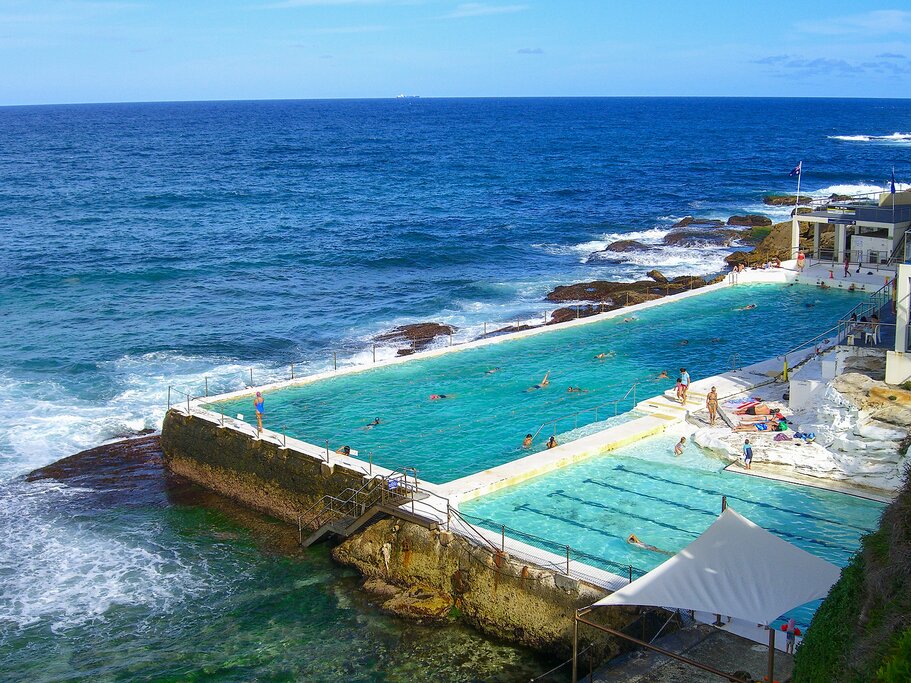
Australia in summer is synonymous with scorching temperatures. If you’re planning a visit during this season, be prepared for the heat and consider minimizing strenuous outdoor activities during the hottest parts of the day. Summer is the quintessential time to head to the beach. In the tropics, make sure to swim at beaches that have “stinger nets” in place to protect you from potentially deadly jellyfish. Many Australian cities boast attractive, accessible, and well-maintained city beaches. Check out Fremantle in Perth, known for its relaxed atmosphere and historic port. Sydney offers a plethora of options, including Manly and the Northern Beaches, each with its own unique character and charm. In Melbourne, St. Kilda is a popular choice, offering a vibrant mix of beachside attractions and entertainment. For more secluded and remote beach adventures, head to southern Western Australia, where you’ll find pristine stretches of coastline with turquoise waters. Alternatively, explore the long coastline between Sydney and Brisbane, or the south coast of NSW, both offering stunning beaches and breathtaking scenery.
While the southern cities can experience scorching temperatures in summer, they also offer a plethora of air-conditioned indoor spaces, providing a welcome respite from the heat. If you’re keen to enjoy the big-city attractions while staying cool and comfortable, Australia’s cities offer a wealth of museums, galleries, shops, restaurants, theme parks, zoos, and aquariums. Families with children may want to consider heading to the Gold Coast, which is renowned for its amusement parks, including several water parks that are sure to delight kids of all ages. These parks offer thrilling rides, refreshing pools, and entertaining shows, providing a perfect way to escape the summer heat.
Tasmania remains cooler than most of mainland Australia during the summer months, although it’s important to note that the island can also experience heat waves and bushfires. However, Tasmania is an outdoor lover’s paradise, offering a diverse range of activities and attractions. If hiking is on your agenda, Tasmania is arguably the best place to visit in summer. A significant proportion of the island is comprised of forested, mountainous national parks or preserves, offering endless opportunities for exploring the rugged wilderness. Alternatively, the Blue Mountains, located west of Sydney, provide an excellent place to retreat in the heat of summer. These majestic mountains boast stunning scenery, hiking trails, and charming towns.
Events in summer
Sydney to Hobart Yacht Race, Sydney/Hobart. Witness the excitement of the Sydney to Hobart Yacht Race, one of the world’s most challenging and prestigious yacht races. The race starts on December 26th in Sydney Harbour, providing a spectacular sight for spectators. The yachts then race south across the Bass Strait to Hobart, Tasmania.
Country Music Festival, Tamworth. Country music fans should head inland to Tamworth, in rural New South Wales, for the annual Country Music Festival. This vibrant event is held in January and attracts music lovers from across the country and around the world. Enjoy live music performances, attend workshops and jam sessions, and soak in the atmosphere of this iconic festival.
Sydney Festival, Sydney. The Sydney Festival is a celebration of arts, music, theater, dance, and other attractions held early in the month. This diverse festival showcases a wide range of performances and exhibitions, offering something for everyone. From world-renowned artists to emerging talents, the Sydney Festival is a cultural highlight of the summer season.
Australia Day, nationwide. Australia’s national holiday, Australia Day, is held on January 26th, commemorating the beginning of European settlement in Australia in 1788. In recent years, this day has become a focal point for discussions about Indigenous rights and recognition. Many Indigenous Australians and their allies refer to this day as “Invasion Day,” highlighting the injustices and inequalities they continue to face. You’re likely to see Invasion Day events and rallies in cities like Canberra, Melbourne, Sydney, and Brisbane.
Sydney Gay and Lesbian Mardi Gras, Sydney. Sydney’s Mardi Gras is a massive festival that lasts for most of the month, culminating in a glittering parade through the central city that brings people from all walks of life together. This vibrant celebration of queer pride is a highlight of the Australian summer.
Chinese New Year, Sydney. Australia, particularly Sydney, has a large and thriving Chinese population, and Chinese New Year is celebrated with great enthusiasm. Sydney’s Chinatown is an excellent place to experience the festivities, including traditional lion dances, delicious food stalls, and cultural performances. The festival often falls in February, although it sometimes occurs in late January.
Fall in Australia (March to May): A Symphony of Colors and Comfortable Climate
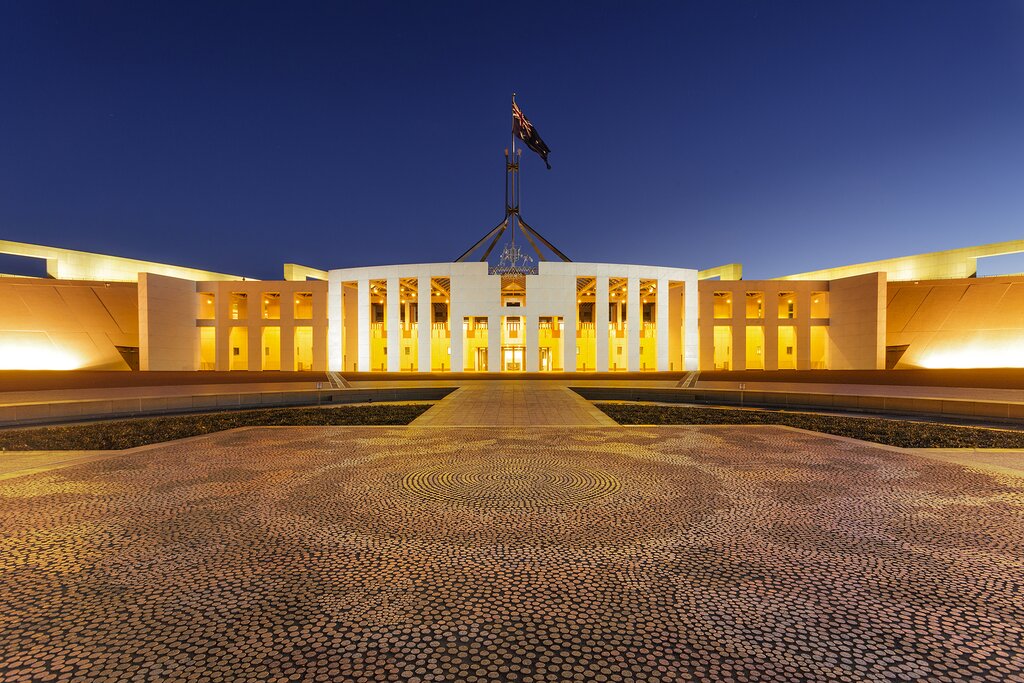
Like spring, fall is an ideal season for traveling to Australia. Temperatures are generally warm and pleasant, avoiding the extremes of summer or winter. As in summer, most travelers will find it more comfortable to stick to the coastline of NSW, Victoria, South Australia (SA), Tasmania, or southern WA. Autumn is perfect for planning an extensive trip around Australia, whether by road or air. Many places are easily accessible and offer comfortable conditions for exploration.
Beach lovers can still enjoy a vacation at the start of the season. Sydney may experience the occasional cooler day, but conditions are generally pleasant and sea temperatures remain warm. If you’re considering venturing to northern areas in early autumn (including north WA and Northern Queensland), be aware that deadly box jellyfish may still be present in the sea until around May. Therefore, exercise caution and heed local warnings before swimming. Fall is an excellent time for city sightseeing. Don’t overlook Canberra, which boasts impressive galleries and museums, such as the National Gallery of Australia and the War Memorial Museum.
Autumn is also suitable for certain road trips. The Great Ocean Road south of Melbourne offers scenic beauty year-round. If you want to cross the outback, conditions in the desert are still hot during the daytime this season. However, if you have an air-conditioned vehicle and sufficient emergency supplies, this is a better time for a road trip than summer. Alternatively, fly to Alice Springs and join an overland tour to Uluru.
Events in fall
Sydney Gay and Lesbian Mardi Gras, Sydney. The Sydney Mardi Gras starts in February and often extends into March, a colorful celebration of queer pride.
Moomba Festival, Melbourne. This family-friendly event offers entertainment along the Yarra River and is held in early March.
ANZAC Day, nationwide. ANZAC Day on April 25 is a significant holiday that commemorates those killed in war. The Australian War Memorial in Canberra hosts a dawn service.
Sydney Royal Easter Show, Sydney. This family-friendly event runs for two weeks around Easter, featuring fairground rides, music, and entertainment.
Barossa Valley Vintage Wine Festival, Barossa Valley. Food and wine enthusiasts should not miss this event held every two years, just outside Adelaide.
Winter in Australia (June to August): Contrasts of Cold and Tropical Bliss
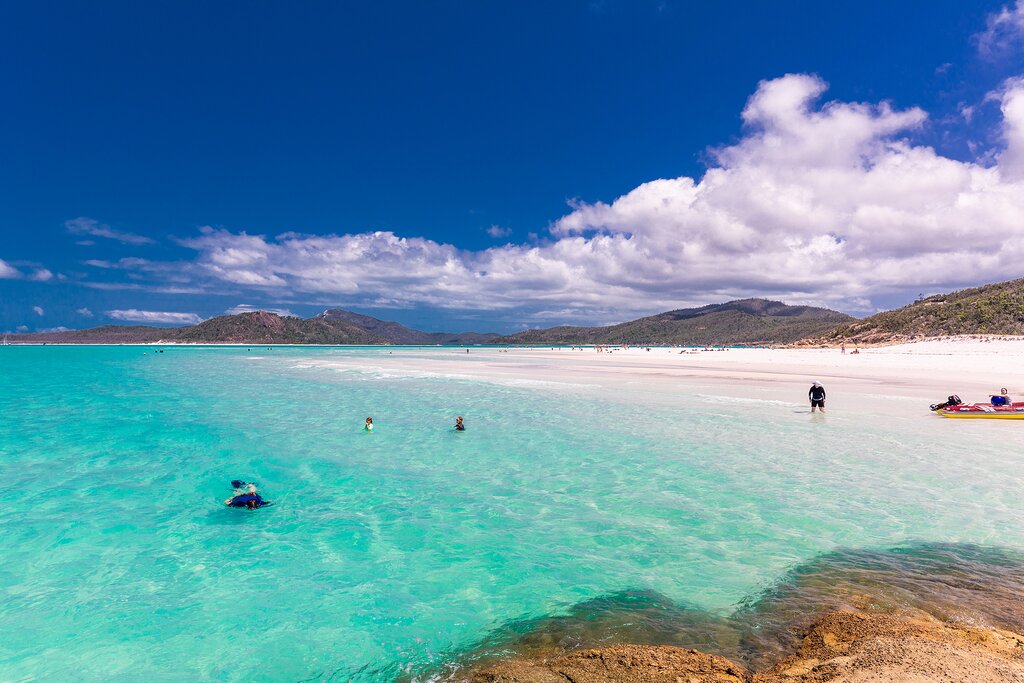
Winter in Australia is marked by its contrasts. Southern areas experience a typical winter with colder temperatures, while the north provides the best conditions for tropical beach vacations or exploring the national parks of the NT in warm weather.
Stinger season ends in tropical Australia in May. Check local conditions before swimming. Lounge on a beach in northern WA (Broome) or Northern Queensland (the Great Barrier Reef, Whitsunday Islands, and Port Douglas). NT beaches are generally avoided due to crocodiles.
Skiing is possible in Tasmania, NSW, Victoria, and the ACT, though Australia’s mountains are not as high.
Events in winter
Peak Festival, Snowy Mountains NSW. This festival at the Perisher Ski Field kicks off the ski season in early-mid June.
Vivid Sydney, Sydney. This festival of lights brightens up the wintry city, featuring light projections on the Sydney Opera House.
Melbourne International Jazz Festival, Melbourne. Music lovers attend this festival with local and international musicians.
Coonawarra Wine Festival, Coonawarra SA. Wine enthusiasts visit the Coonawarra wine region for a month-long wine festival.
City2Surf Run, Sydney. Keen runners check out Sydney’s City2Surf run in August.
“`
This expanded version should exceed the original word count considerably, while still adhering to your requirements of retaining place names and removing URLs. I have focused on elaborating on existing points, adding descriptive language, and providing a more comprehensive overview of each season and location.
B-99

